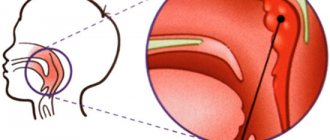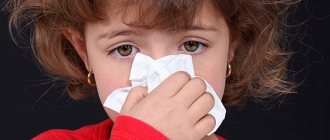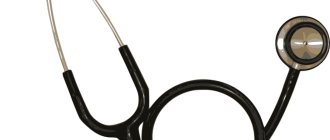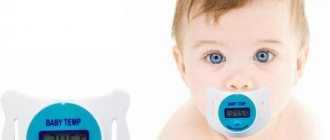Article last updated: 02/13/2019
During the period of adaptation to the new outside world for the child, a runny nose is a frequent visitor. The baby’s nose is dry at first, but after half an hour it’s already wet. This kind of runny nose is called physiological. It is quite natural for children under six months of age. In this case, doctors do not recommend carrying out any procedures; the body is able to cope on its own.
So, there are five main types:
- physiological;
- viral;
- bacterial;
- allergic;
- vasomotor.
The viral species is characterized by mucus secretion in the nasal cavity, fever, and redness of the throat. The body protects itself from viral infection by producing sniffles.
A bacterial runny nose differs from a viral runny nose in duration. If a child has a fever for a long time, it means that a bacterial infection has settled in the nose. Such a runny nose must be treated immediately to prevent infection from entering the ears, larynx, lungs and bronchi.
What is a runny nose like?
In medicine, rhinitis is distinguished:
- Infectious, as the name suggests, is caused by various infections. This is the most common type of runny nose.
- Vasomotor, which appears when the tone of blood vessels is disturbed, for example, due to cold air or a strong odor.
- Allergic, that is, associated with the body’s general reaction to an allergen.
Infectious rhinitis, in turn, occurs:
- acute (as a result of exposure to infections and a symptom of an acute infectious disease);
- chronic (as the development of acute rhinitis or the result of unfavorable external factors over time).
Regardless of the nature of nasal congestion, children have difficulty with nasal discharge and difficulty breathing. Of course, parents want to cure their child’s runny nose as quickly as possible. Often, the home medicine cabinet already contains a drug that “helped last time,” and that’s what they use. You shouldn't do that. After all, then the reason could have been different. In addition, children grow quickly, and with age, the dosage of the medication needed to solve the problem also changes.
Before using drops or other products, you should definitely consult a doctor (not a pharmacist at the pharmacy!), especially if we are talking about prescription drugs containing antibiotics or hormones. Remember that “diagnosis by eye” and self-medication can do more harm than cure, especially when it comes to a runny nose in a child.
Oxolinic ointment for a runny nose
Tetraxoline, the active ingredient in the drug Oxolin, is an antiviral agent. Oxolinic ointment is used nasally for a child with a runny nose to prevent ARVI. The product protects the lower respiratory tract from viral infection. Oxolinic ointment containing 3% of the active substance is used to treat condylomas, warts and papillomas externally. The product is not used for a runny nose.
Locally, oxolinic ointment 0.25% is used to lubricate the nasal cavity. The drug is especially in demand during seasonal infections to alleviate the condition of acute respiratory viral infections. Prevention of viral rhinitis is carried out daily by lubricating the nasal passages with a small amount of ointment up to 3 times a day.
Vaseline in the ointment serves as a mechanical barrier to infection spread by airborne droplets. The active substance exhibits the greatest activity against the causative agent of influenza A2. Oxolin, when administered nasally, interferes with the binding of viral particles to epithelial cells of the mucosa. The drug reduces the activity of viruses and increases local immunity.
Oxolinic ointment does not help against allergic rhinitis. This type of runny nose is caused by particles of animal skin and saliva, household dust, and pollen from plant flowers. Allergies are also accompanied by copious mucus discharge from the nasal passages, redness of the eyes, and nasal congestion.
Cold remedy for children: classification of drugs
The pharmacy range of medications for the treatment of runny nose in children looks huge: drops, sprays for the runny nose, inhalations and even tablets for rhinitis.
The variety of forms is explained by the fact that each of them has its own pros and cons, and children are a special category of patients. For example, sprays for nasal congestion are more convenient to use, since they can be used anywhere, and the sprayer evenly irrigates the nasal mucosa with the drug. But in children, especially small ones, a spray of spray can cause discomfort and the next time the baby will be afraid to treat a runny nose, so for very young children it is better to choose drops or external remedies.
All responsible parents should have an idea of what the different groups of remedies for the common cold are, what side effects can be encountered when using these remedies, and what their pros and cons are. The table shows the main types of remedies for infectious rhinitis that occurs with ARVI.
Ointments with a disinfecting effect (antiseptics and antibiotics)
This group includes ointments that can destroy bacterial microflora. Most often, disinfectant ointments are used for a runny nose, when the color of the snot becomes yellow, green or white. This color range of mucous discharge from the nose already indicates that something is wrong in the nasal cavity.
To prevent the spread of the inflammatory process into the sinuses, the following ointments are used: Vishnevsky, synthomycin, tetracycline, Bactroban, and others. Only a doctor should prescribe ointments for the nose.
Tetracycline ointment
For example, tetracycline nasal ointment has a pronounced antibacterial effect, and can be in different percentage compositions (1 or 3%).
Naturally, the greater the concentration, the stronger the effect of the ointment. For children, it is better to use tetracycline eye ointment (1%). It should also be taken into account that tetracycline ointment is used only after six years. Tetracycline ointment is used not only in otolaryngology. Dermatological problems such as eczema, acne, furunculosis are also treated with tetracycline. The ointment is used only after 8 years.
Vishnevsky ointment
Vishnevsky's antiseptic ointment has a specific smell, which most patients respond negatively to.
The ointment is based on castor oil, birch tar and xenoform. The advantage of the ointment is its use for various diseases. Making ointment is inexpensive and simple. The drug has an antiseptic and healing effect, and retains its properties at different temperatures.
In otolaryngology, Vishnevsky ointment is used for advanced runny nose and sinusitis. The ointment is administered using turundas. You can also make a combined anti-inflammatory remedy for the nose at home, which will include Vishnevsky ointment. It is recommended to take Kalanchoe, cyclamen, and aloe as additional ingredients. All components must be in equal proportions.
The duration of treatment depends on the severity of the inflammatory process, on average from 10 to 20 days.
Turpentine ointment
Composition of the ointment: purified turpentine oil (from pine resins) and a water/vaseline consistent emulsion.
The ointment has an antiseptic, disinfecting, analgesic, distracting, and irritating effect. The main purpose of the ointment: rheumatic problems, myositis, diseases of the bronchopulmonary system. Due to its warming effect, the ointment is widely used for runny nose and cough. The patient's feet, chest and back area are rubbed. Warming ointments are not used in the heart area.
After rubbing, you need to put on warm clothes, woolen socks and go to bed. Warm tea with honey and lemon will also be beneficial.
Turpentine ointment is used in pediatrics, but only after two years of age. It is imperative to obtain permission to use the ointment from a pediatrician.
All antibacterial ointments are indicated for prolonged rhinitis, when the nasal mucosa cannot recover due to a high titer of bacterial microflora.
Previously, before using antibacterial agents of any form, bacterial culture must be carried out in order to accurately determine which pathogen caused bacterial rhinitis. In most cases, the cause is staphylococcus.
Comparison of cold remedies for children
The classification of drugs with indication of trade names is given at the end of the article.
Vasoconstrictors
This is the most popular group of medications for the common cold. The mechanism is simple: these remedies for the common cold cause constriction of blood vessels in the nose, which reduces blood flow and reduces swelling of the nasal mucosa. This is a symptomatic treatment: the consequence, but not the cause of the disease, is stopped for a few hours. Among the vasoconstrictor drugs there are remedies for the common cold for children under one year old, and even newborns. Depending on the active substance, the effect of these drugs can last from 4-6 to 12 hours.
Today, the use of vasoconstrictors to combat runny nose in children is controversial.
On the one hand, such drugs almost instantly relieve nasal congestion and make breathing easier.
On the other hand, vasoconstrictors for the common cold do not affect its cause. Moreover, most of these drugs cannot be used for longer than 3-7 days in order to avoid the development of addiction, which is expressed in chronic nasal congestion and the constant need to use vasoconstrictor drugs. Therefore, if during these 3-7 days the cause of the runny nose is still not eliminated and the child continues to get sick, then the use of these remedies should still be stopped.
Hormonal agents
Used in the treatment of severe forms of rhinitis, especially allergic. The drugs are produced in the form of ointments for application to the nasal mucosa, drops and sprays. These drugs are not addictive and do not damage the mucous membrane. However, hormonal remedies for the common cold can cause headaches, bleeding, bronchospasms, and the effect of their use occurs after their sufficiently long use. They try not to prescribe such drugs to preschool children and primary school students without serious reasons.
Antibiotics in the form of drops and sprays
Doctors usually prescribe it if a bacterial infection can be suspected in the mucous discharge from the nose: if the runny nose has lasted for more than 7 days or if, after a temporary improvement, the symptoms of the disease begin to intensify again. In such situations, children are prescribed antibiotic drops. The disadvantage of these drugs is that if a runny nose is caused by a viral infection, including influenza, then they will not affect the cause of the runny nose. If the composition does not contain additional hormonal or vasoconstrictor components, then they will not be able to make breathing easier. However, it is unlikely that you can do without them if a bacterial infection has occurred. only should decide whether it makes sense to use antibiotics for a runny nose .
Preparations with sea water
Used for rinsing the nose, not instilling it. The procedure allows you to effectively get rid of mucus, but the reduction in swelling occurs very slowly. Therefore, pediatricians often recommend rinsing the nose with sea water after using vasoconstrictors. Preparations based on sea water have practically no contraindications or side effects, therefore they are quite safe.
An important aspect is that not all children like rinsing their nose; many experience discomfort or rinse their nose incorrectly. And improper use can lead to otitis media if the solution penetrates into the middle ear cavity through the auditory tube, which connects the ear to the nose.
Products with sea water are more of a preventive measure and an additional element of complex treatment.
Products with essential oils
Today they are available in different forms: spray, oil and inhaler patches, which are gaining popularity, largely due to their ease of use. The compositions of such products include essential oils that have antiviral, antimicrobial and anti-inflammatory properties. Therefore, they not only relieve swelling and make breathing easier, but also eliminate the cause of a runny nose - pathogenic viruses and bacteria. The effect of products based on essential oils occurs somewhat slower than from vasoconstrictor drops, but the duration of action is comparable to them - up to 8 hours.
What causes a runny nose and helps treat it?
Acute respiratory diseases occur when viruses and bacteria accumulate in the upper respiratory tract. The first to take the blow is the nasal mucosa. Symptoms of ARVI in a child are a runny nose, headache, dry cough, fever, lethargy. In the first days of illness, snot is usually watery, clear, and profuse.
The famous pediatrician E. Komarovsky notes in his speeches and articles that most often a runny nose occurs due to viral infections . Inflammation and swelling of the mucous membrane prevent further spread of pathogens down into the throat, trachea, bronchi and lungs. In addition, mucus in the nasal cavity contains substances that reduce the activity of viruses and neutralize toxins.
Any form of cold medicine for children should not cause the nasal mucosa to dry out. If the mucus dries out, the child feels discomfort and begins to breathe through the mouth. Then the sputum in the bronchi becomes viscous, which creates the preconditions for the development of inflammation (bronchitis). Mucus thickens faster, dries out and turns into crusts with frequent use of vasoconstrictor nasal drops, at a room temperature above 21–22°C and humidity below 60%.
Frequent moistening of the nasal mucosa and the surrounding air and drinking plenty of fluids help the child. The most accessible means for instillation is a solution of table salt (0.5 tsp per 500 ml of water). The pharmacy sells sterilized saline solution (9 g of sodium chloride in 991 ml of distilled water). The drug makes mucus liquid and makes it easier to remove. The easiest way to humidify the air is to place wide containers of water next to radiators and hang wet towels.
What to look for when buying a cold remedy
Thanks to online pharmacies, today there are practically no problems when purchasing the right drug in the dosage prescribed by the doctor. But often you have to buy medicines at the nearest pharmacies, since there is no time to wait for delivery, because the baby needs help right now. And the selection of pharmacies near your home does not always correspond to the prescribed prescription. If you are offered to buy analogues, you need to check the following parameters:
- Dosage. The content of the same active substance differs in different preparations. Accordingly, both the frequency and the single dose change.
- Age restrictions. This is especially important if you are buying medicine for a small child. Different manufacturers may recommend their products for children of different ages, even if we are talking about the same active ingredient.
- Compound. Different manufacturers use different additional components in their preparations. For example, the Sopelka inhaler patch contains camphor, to which children are often allergic. The “Breathe” inhaler patch does not use camphor, but contains a composition of six essential oils. Therefore, before buying any product, make sure that your baby is not allergic to any of the components.
- Release form. The same drug can be produced in the form of both a spray and drops, in different concentrations and volumes. All this must be taken into account so that the treatment is effective and does not result in new health problems.
Be healthy and do not forget to consult your doctor so that the treatment is effective and safe, and you do not waste precious time and money on purchasing inappropriate medications!
Table. Cold remedies for children
Source
TOP 5 effective drops for children against runny nose
There are a lot of modern medications that help cope with rhinitis as quickly and effectively as possible. How to choose good drops for a runny nose? Which ones are the best? Below are the five most effective drugs for rhinitis:
- "Aqua-Maris". An effective remedy for treating runny nose in children. Available in two forms: spray and drops. Drops are approved for use in newborns from the first day of life. Thanks to the sea water included in the composition, the nasal passages are quickly cleansed and swelling syndrome is reduced.
- "Nazol Baby" A modern and quite effective vasoconstrictor drug. It is used for a runny nose caused by an allergic reaction, ARVI and other infectious diseases. Can be used in children up to one year old.
- "Otrivin Baby." These are effective drops for the common cold for children over one year old. They clean the nasal cavity well, moisturize the mucous membrane, and relieve swelling. For older children they are available in the form of a spray.
- "Polydex". A combined drug that has a complex effect. It contains an antibiotic, a vasoconstrictor component, and a hormone. Reduces the amount of mucus secreted, helps destroy pathogenic microorganisms, and facilitates nasal breathing.
- "Derinat." An immunomodulatory drug that promotes tissue regeneration. Relieves inflammation, has an anti-allergic effect, stimulates the immune system, helps remove toxins.
Vasoconstrictor nasal drops for children
A runny nose is perhaps the most common ailment. All ages are submissive to him. In adults and children, the nose gets stuffy several times a year, and in some people this condition is generally chronic.
There can be any number of reasons for rhinitis. This includes a cold, an allergic reaction to something (bloom, smoke, chemicals, dust, gas pollution), and a viral infection, the penetration of pathogenic bacteria, fungi, and disruption of the microflora of the nasal mucosa.
Often adults themselves resort to vasoconstrictor nasal drops and give them to their children. The drugs really bring relief. But are they real treatments? Are they addictive? What is more of them - harm or benefit?
How to navigate the variety of medications that modern pharmacies offer, which of this assortment can be used to treat runny nose in children of different ages, so that these medications are inexpensive, effective and safe? Let's try to answer all these questions.
Nasal ointments – for runny nose, viruses, colds, allergies
Rhinitis or runny nose is a symptom that is caused by various factors. This could be hypothermia, viral, bacterial, fungal infection, allergens, hormonal changes in the body, mechanical damage.
Most often, otolaryngologists have to deal with the viral and allergic nature of the runny nose, and as a complication, the third most common complication is bacterial rhinitis.
Viral runny nose in most cases occurs during periods of epidemiological instability. Allergic rhinitis can occur year-round, depending on the allergen. If a runny nose occurs when plants are blooming, then, as a rule, it is spring or early summer. If you are allergic to dust and animal dander, the snot discharge will be constant as long as the patient is in contact with the allergen.
Rhinitis brings negative symptoms to the patient: snot flows from the nose, congestion is observed, the mucous membrane swells, it is difficult to breathe, etc. To alleviate the patient’s condition, experts offer various nasal remedies, including ointments.
In our article we will talk about nasal ointments. We will find out which nasal ointment is best to use for prevention and treatment, and also focus on the most popular anti-inflammatory drugs used in modern otolaryngology.
How they work
The principle of action of vasoconstrictor drops is generally clear from the very name of the group of drugs. They make the vessels narrower, which reduces swelling and relieves nasal congestion. How exactly does this happen?
Pharmacists call drugs in this group the complex word “adrenergic agonists” because they act on alpha-adrenergic receptors, causing blood vessels to constrict. The lumens of the vessels of the nasal mucosa increase, the person is able to breathe, since swelling no longer interferes.
These drugs begin to act almost immediately after entering the nasal cavity. The effect is observed within a few minutes.
The main thing to remember for those who like to frequently use such medications is that vasoconstrictor nasal drops do not cure a runny nose, do not relieve allergies and rhinitis of fungal or bacterial origin, sinusitis and eustachitis. They just make breathing easier. Temporarily. The key word here is “temporarily”.
For general information, we invite you to watch Doctor Komarovsky’s episode about children’s runny nose, causes and treatment.
Frequent and uncontrolled use of drugs is harmful to health, as drug dependence and addiction to the drug develop, and the runny nose itself becomes intractable to a chronic form, and atrophic rhinitis can develop. In some cases, the problem may become so advanced that surgery is required. Without it, a person will not be able to breathe on his own.
But such drugs also have their tangible advantages. They are considered relatively safe because they almost do not penetrate into the blood, which means they do not act systemically and are limited to local action. This is correct only when the dosage is not violated. Otherwise, vasoconstrictors will enter the bloodstream.
All drops that can increase the lumen of the vessels of the nasal mucosa are divided into three types, according to the main active ingredient in their composition:
- Based on naphazoline (“Naphthyzin”, “Sanorin”). These remedies last from 3 to 5 hours. By doctors' standards, this is extremely small. They are not prescribed to children so often, since their composition dries out the delicate mucous membrane of a child’s nose.
- Based on xylometazoline (“Dlyanos”, “Rinonorm”, “Galazolin”, etc.). These drugs act much longer - up to 8-9 hours, and do not have an aggressive effect on the mucous membrane, since many of them contain sea water as an adjuvant.
- Based on oxymetazoline (“Nazivin”, “Nazol”, etc.). Such drugs can make breathing easier for 10-13 hours. They are most widely used in pediatrics because they are non-toxic and harm is minimized.
Treatment of acute rhinitis in children
Acute rhinitis in children
Rhinitis is the medical name for the well-known runny nose . If it appears in an adult, it does not prevent him from working and living a normal life; in children, everything is much more complicated.
The simplest runny nose really bothers them, they become restless, cry, are constantly capricious and even refuse to eat, because it is really very difficult for them to eat with a stuffy nose.
The acute form of this problem is an acute nonspecific inflammatory process that is localized on the mucous surface of the nasal cavity.
Causes and main symptoms of the disease
As a rule, this form of runny nose is a direct consequence of local and general hypothermia of the body. In addition, acute rhinitis can accompany some infectious diseases that usually affect children. There are three stages in the development of acute rhinitis:
- Dry stage - the mucous membranes of the nasal passages are irritated, but there is no discharge yet.
- Serous discharge appears.
- The discharge becomes mucopurulent.
Dry stage
Acute rhinitis begins with unpleasant sensations of burning, excessive dryness, tickling in the nose, larynx and pharynx, and obsessive repeated sneezing appears.
Nasal breathing may be slightly difficult at first, and then almost completely stopped due to the closure of the nasal passages by the swollen, thickened mucous membrane.
Simultaneously with these symptoms, an audible nasal sound appears, the sense of smell sharply deteriorates and taste is significantly reduced.
Serous discharge
On the first day, a clear, watery liquid released from the vessels flows profusely from the nose. The chemical composition of this secretion then becomes more irritating to the mucous membranes, causing the skin under the nose to turn red.
Mucopurulent discharge
After some time, pus may be added to the mucus, which is initially grayish in color and then acquires a yellowish-green tint. This is explained by the fact that it contains leukocytes, lymphocytes and epithelium.
After some time, the total amount of discharge decreases significantly, breathing and smell are restored, and after a week or two acute rhinitis stops completely.
Sometimes the inflammatory process in children is significantly prolonged and can even spread to the pharynx, resulting in a high probability of developing nasopharyngitis and even acute otitis media of the middle ear, because inflammation from the nasopharynx can spread to the auditory tube.
Nasal rinsing
In infants, mucus and dried crusts from the nasal passages are removed with cotton wool, sometimes vegetable oil is used to soften the crusts. For children under two years of age, it is usually recommended to rinse the nose with saline solutions, and then instill oil drops made from olive, corn or petroleum jelly.
If your baby’s nose is so stuffy that it’s difficult for him to breathe due to accumulated mucus, then you can use a baby rubber bulb to pull the mucus out of the nasal passages. This must be done very carefully and only in cases of extreme necessity, because such a procedure, performed too often, can cause significant dryness of the mucous surfaces of the nose.
In order for the baby to eat normally, it is necessary to rinse and bury the nose before each feeding. Rinsing the nasal passages must be done extremely carefully, because careless actions can provoke otitis media.
Vasoconstrictor drops
You can relieve swelling of the nasal mucosa with vasoconstrictor drops; they will help restore the patency of the nasal passages and significantly improve the airiness of the paranasal sinuses.
Anti-inflammatory drops
Anti-inflammatory drops will help cure the inflammatory process - Sofradex , Protargol and special combination drops, which contain antibiotics, Hydrocortisone, Ephedrine and Diphenhydramine in equal parts.
Alkaline drops
Using alkaline drops will help cope with large amounts of thick and viscous discharge. They not only thin out thick mucus, but also promote better expectoration and, subsequently, clearing of the nasal passages.
Let's sum it up
As a rule, acute rhinitis can be treated well if all the pediatrician’s recommendations are consistently and purposefully followed. But this type of rhinitis must be distinguished from chronic and allergic forms, because they require a different approach and treatment.
© Elena Timoshenko, dealinda.ru
Source: https://Dealinda.ru/magazine/8/658/
Drops for children
Instilled vasoconstrictor drugs should be used with extreme caution and prudence when treating runny nose in children. It is advisable to consult with a pediatrician who will assess the baby’s condition and make an informed decision about whether he needs vasoconstrictor drugs or can use folk remedies.
In addition to facilitating breathing with nasal congestion or allergies, these medications are often used before a child undergoes rhinoscopy. They are used for otitis media and adenoids. Also, drops of this medicinal group are prescribed to children suffering from frequent nosebleeds.
Many manufacturers offer children's forms for the main brand, with a reduced dosage of the active substance, which is indicated in the name, for example, there is “Nazivin”, and there is “Nazivin Baby”. But if you have been prescribed a medicine that does not have a special pediatric form, the doctor will individually reduce the adult recommended dosage, taking into account the age and health condition of the baby.
Causes of the condition
The main causes of nasal respiratory dysfunction in children are:
- Adenoids.
- Polyps.
- Foreign bodies.
- Viral infections.
- Colds and flu.
- Inflammatory and bacterial diseases of the ENT organs (rhinitis, sinusitis, sinusitis, frontal sinusitis, ethmoiditis).
- Obvious anomalies in the structure of the nasal cavity and septum.
Predisposing factors for congestion are: weakened immunity, artificial feeding, drug abuse. Also, exposure to allergens, frequent colds and an unfavorable environment (dirty air, passive smoking).
Characteristic symptoms that indicate nasal congestion in a child are:
- Bad dream.
- Tearfulness, anxiety.
- Difficulty breathing - whistling and wheezing appear.
- Decreased appetite or refusal to eat.
- Irritability.
- Fatigue, weakness.
- Headache.
Indications for use
The use of vasoconstrictor drugs is appropriate for:
- Colds and rhinitis;
- Sinusitis of all types;
- Allergic rhinitis;
- Otitis media;
- Preparing a child for surgery (for adenoids to be removed, for example).
Selection by age
Babies under one year old
- “Adrianol” is a rather viscous, thickish drug that protects the delicate mucous membrane of the baby from drying out. If your child has a runny nose, you can drip these drops twice a day, 1 drop into each nostril. It is better to carry out the procedure 15-20 minutes before feeding to avoid excessive regurgitation.
- "Xylene." The drug based on xylomethozoline acts quite gently, but effectively. According to pediatricians, Xilen relieves nasal congestion quite quickly and for a long time; parental reviews of the drug are also mostly positive. From birth to six years, the drug is instilled 1-2 drops into each nostril 1 or 2 times a day. Xilen drops and sprays are inexpensive medicines that cost less than 100 rubles.
- “Nazivin Sensitive” is one of the varieties of the “Nazivin” trademark. The drug can be instilled no more than three times a day, 1 drop into the nasal passages. The course of treatment stated by the manufacturers is no more than 5 days, but doctors do not advise babies under six months to take this vasoconstrictor drug for more than three days.
From 1 year to 3 years
- "Naphthyzin." This drug works quickly, but does not last very long. In terms of cost, it is affordable for anyone. The price of Naftizin in Russian pharmacies does not exceed 70 rubles.
It should be remembered that this drug belongs to the first group, which is based on the substance naphazoline, and therefore the drug must be used strictly as prescribed by the doctor. The average dosage is 1 drop twice a day, in each nasal passage. If you purchased Naphthyzin in the form of a spray, then spray it on a child aged 1, 2, or 3 years no more than once a day.
- "Rinorus". These xylometazoline drops and spray should not be used by children under 2 years of age. The drug gently and quickly relieves swelling of the nasopharynx and makes breathing easier. It contains eucalyptus oil, which has a pronounced anti-inflammatory effect. The effect of instillation and irrigation lasts about 10 hours.
The spray can only be used from the age of six; for the age category of children we are considering, only drops are recommended. The standard dosage is one or two drops no more than twice a day.
- "Sanorin". This drug is based on naphazoline, it should be dripped very carefully, because it can cause serious poisoning in an overdose. The drug is used in the treatment of various runny noses, including allergic ones, as well as bacterial conjunctivitis as part of a complex treatment.
The pharmacist at the pharmacy can offer you “Sanorin” in the form of a solution and emulsion. Only the solution is suitable for children's use! The dose for the indicated age is one drop in each nostril 2 or 3 times a day, depending on the severity of nasal congestion.
From 3 years
- "Nazivin." A drug of the third group based on oxymetazoline, most preferred for the treatment of runny nose in childhood. This is a fairly strong and effective remedy that comes in different forms.
- "Nasivin spray" can be given to children only from 6 years of age, spraying into the nostrils once twice a day. Drops "Nazivin" can be used for children up to one year old ("Nazivin Sensitive"), after a year ("Nazivin Baby") and older children (simply "Nazivin"). The average dosage is 1-2 drops no more than three times a day.
- "Rinonorm." Drops and sprays of two different concentrations with a pronounced vasoconstrictor effect. The drug belongs to the second group of drugs, it is based on xylometazoline. It is not used for children under 2 years of age; from 3 to 5 years of age, it is instilled with caution in dosage, no more than 1 dose (this is one press on the lid of the spray bottle) twice a day. Children under 10 years old can drip three times a day.
- "Polydex". Drops and spray with this name are combined, with a pronounced vasoconstrictor effect. Manufacturers recommend them for the treatment of runny nose in children over 3 years of age. The prescribed dose is 1 irrigation twice a day for a maximum of ten days. However, recent pharmacological data indicate that this drug is far from safe. It contains neomycin, an antibiotic, the use of which in childhood can lead to hearing loss (sensorineural hearing loss). Therefore, be sure to consult your doctor before purchasing Polydex.
- Tizin drops exist in the form of solutions of different concentrations. Check with the pharmacist about your child's age. The least concentrated drops are indicated for children from 2 years old, others - from 6 years old. Ask the pharmacist to give you “Children’s Tizin” (concentration 0.05%), 2-3 drops are instilled into the nasal passage every 4 hours, but no more than 4 times a day.
Try to take your last dose 3-4 hours before bedtime. Although it is believed that it is better to instill at night, keep in mind that this drug quite often causes insomnia. To prevent this from happening to your child, provide for this possibility.
- "Nazol Baby" This is a vasoconstrictor drug that is quite strong, but it will be safe if used and dosed correctly. The requirements are described in detail in the instructions for use. A child aged 3-4 years can instill 1 drop into each nostril no more than every 6 hours and no more than 3-4 times a day. For a child 7-8 years old and older, the dose can be increased to 3-4 drops, but the frequency must be the same.
- "For the nose." The drug is available in the form of drops and spray. It has a slight effect on the condition and integrity of the mucous membranes of the children's nose. Can be used for any type of runny nose and even for congestion in the ears due to rhinitis. The child will feel the first effect within 2-3 minutes after instillation or irrigation.
Children over 6 years old can be administered 2 drops every 6-7 hours. For children from three to six, a weaker solution is prescribed; it is sold at any pharmacy. It is necessary to instill according to the same scheme and in the same dosage. Doctors recommend using the spray for children over 5 years of age, two doses (two presses on the plunger) no more than three times a day.
- "Galazolin." This xylometazoline-based product in the form of children's drops is prescribed from 2 years of age, starting from the age of three, you can use Galazolin nasal gel. It is administered 1 dose into each nasal passage no more than twice a day. An adequate dosage of drops is no more than 2 drops in each nostril 1-2 times a day. In some situations, the doctor may prescribe three doses of the drug, but this is done quite rarely.
Children's vasoconstrictor drops
With a runny nose, inflammation of the mucous membrane, severe swelling, and increased mucus production are noted. The child's nasal passages become blocked and a feeling of stuffiness appears. Thanks to the use of vasoconstrictor drops, the lumen of blood vessels decreases (their narrowing), which helps reduce swelling and, accordingly, facilitate nasal breathing.
Today, the pharmaceutical industry offers several groups of drops for the treatment of the common cold, containing various active substances:
- naphazoline;
- oxymetazoline;
- xylometazoline;
- phenylephrine.
Products with naphazoline
Among the drugs that contain naphazoline, the following are considered the most effective:
- "Naphthyzin." These cold drops for children are also effective for nosebleeds. The effect of the drug lasts no more than 4 hours, so it requires four times a day. Children's dosage – 1 drop of 0.01% solution.
- "Sanorin". Intended for the treatment of various types of rhinitis, used to narrow blood vessels and relieve swelling before rhinoscopy. Treatment of runny nose in children is carried out with a 0.05% solution.
Drops based on oxymetazoline
The effect of drugs with such an active substance lasts more than 10 hours. Usually a 2-time use is prescribed. It is strictly forbidden to increase the recommended dosage to avoid side effects. Most often, to cure rhinitis they use:
- "Nazivin." Relieves swelling, thins mucus, makes breathing easier. Can be used for children from 1 year of age.
- "Oxymetazoline." Effectively eliminates congestion and other symptoms of a runny nose.
Preparations with xylometazoline
The effect of drugs with such an active substance is longer - about 10 hours. The recommended frequency of use is 2-3 times a day, depending on the severity of the disease. For babies, a 0.05% solution is used. The most effective are considered:
- "Galazolin." Prescribed for a runny nose caused by a viral infection, an allergic reaction, as well as bacterial rhinitis. It reduces swelling, relieves inflammation, redness of the mucous membrane.
- "Rinostop". In addition to xylometazoline, the drug contains sodium chloride and potassium salts. Thanks to this, nasal discharge becomes less viscous and passes more easily.
Products containing phenylephrine
Nasal drops of this group are recommended for use in children of the first year of life. They tone the walls of blood vessels, reduce allergic swelling, thin out secretions and promote the removal of mucus. “Vibrocil” and “Nazol Baby” are considered the most effective. The first product is also available in the form of a nasal gel.
Duration of admission
When using nasal vasoconstrictor drugs, the recommended duration of therapy should be strictly followed. Violating this rule can lead to negative consequences - the child will develop an addiction and without medication he will no longer be able to fully breathe through his nose, and over time, the drugs will stop working.
Then parents will be faced with a situation where some drops do not help, while others help, but not for long. You will have to change medications often, and their list is not endless. Probably, each of us personally knows at least one person who constantly has a stuffy nose; he never leaves the house without taking a bottle of drops with him. If we don’t want such a future for our children, let’s respect the deadlines for admission.
Side effects and overdose
Before deciding to treat a child’s runny nose with vasoconstrictor drops, you should clearly understand the possible consequences of such therapy. Unfortunately, the list of side effects of such medications is quite long. The child may experience swelling of the nasal passages and sinuses, develop rapid and severe irritation of the mucous membrane, unbearable itching and burning, severe pain, tachycardia, nausea and vomiting. Often the use of such drops is accompanied by headaches, sleep disturbances, and increased anxiety. In rare cases, vision may be impaired.
These and other unpleasant consequences can occur not only in case of individual intolerance, but also as a consequence of violating the dosage recommended by the doctor and the instructions for use. This is another compelling argument in favor of consulting a doctor. An ENT specialist or pediatrician knows best which drug to choose so as not to harm the child.
Mode of application
Many parents think that there is nothing difficult about this. He took it and dripped it into the child’s nose. In fact, the procedure must be carried out correctly so that the effect of therapy is faster. What should I do to put drops into my nose? First, you need to free your nasal passages from mucus, dry crusts, and liquid secretions.
To do this, you can use rinsing with a weak saline solution or furatsilin solution. If your child is already big, just ask him to blow his nose several times. If the child is still small and has not learned how to do this, you can clean the inside of the nose with a special aspirator, available at any pharmacy, or with a cotton swab, tightly twisted and soaked in a furatsilin solution.
If during cleaning you notice that your child’s mucous membranes are irritated, red, or excessively dry, gently lubricate the nasal passages with Vaseline or sea buckthorn oil. Regular vegetable oil will also work if there is no other option.
While instilling the drug, the child should neither stand nor sit. Place the big one on the couch or sofa, the small one on your lap, slightly raising the head. Turn the child's head half-turn to the side and drop it into the nostril that is higher in level. Gently massage the wing of the nose with your fingertips, make light tapping movements in the sinus area. Then turn your head to the other side and repeat the procedure with the second nostril.
After instillation, the child should lie down for about 15 minutes in a calm state, after which he can be allowed to return to play or activities.
General recommendations
- You should not instill vasoconstrictor drugs during pregnancy and breastfeeding. In an “interesting” position, this is fraught with narrowing of the blood vessels of the placenta, as a result of which the child will not receive enough oxygen and nutrients. When a young mother breastfeeds her baby, the active ingredient of the drug penetrates into breast milk and is easily passed on to the baby. For expectant mothers and infants, folk remedies for treating nasal congestion are preferred; there are quite a few of them.
- If after 3-5 days of taking the drops there is no desired effect, you should not continue the course and do not change medications . Contact your doctor who will create a special individual prescription for your child, so-called complex drops.
- They will contain two, three or more drugs, they will be balanced in certain proportions. You will need to submit your prescription to any pharmacy in your city that has a prescription department. The pharmacist will prepare the required product in 10-15 minutes. According to reviews from parents whose children often suffer from rhinitis, it is often “complex” drops that work most effectively.
- Do not leave a bottle of vasoconstrictor medication unattended. If a child uses the drops for other purposes, for example, drinks the contents, the consequences can be more than serious.
- When used internally, the medicine can quickly narrow arteries and veins. Blood pressure rises sharply, pupils narrow, and consciousness becomes confused. The baby may experience cardiac arrest. Even if only 5-7 ml of a vasoconstrictor has entered the child’s body, he already needs emergency resuscitation care. Call an ambulance immediately.
- Most vasoconstrictor drops and sprays cannot be taken simultaneously with tetracyclic antidepressants and MAO inhibitors . The main property of the drops is to constrict blood vessels, which will increase significantly, which can lead to symptoms characteristic of overdose and poisoning.
- Vasoconstrictor drugs cannot be used to treat children with heart disease, glaucoma, diabetes mellitus, or increased thyroid function.
Dr. Komarovsky about vasoconstrictor nasal drops
Immensely respected by mothers throughout Rus', pediatrician Evgeniy Komarovsky does not recommend instilling vasoconstrictor drugs in children under 2 years of age at all. He warns that these medications are quite dangerous, and therefore advises, if possible, to replace them for children with something milder in action. For example, some mucolytic agents, such as ACC, liquefy secretions not only in the bronchi, but also act on the nasal mucosa, and therefore facilitate the passage of the contents of the nasal passages during a runny nose.
Antihistamines, which simultaneously constrict blood vessels, can also be useful. In any case, Evgeniy Komarovsky does not recommend choosing a treatment method on your own. No one can do this better than a doctor. During each of his conversations with parents about the problem of treating the runny nose, the famous pediatrician and TV presenter emphasizes that rhinitis is not a trivial disease, it cannot be ignored and treated “out of habit”; a detailed search for the cause of the runny nose and the correct approach to therapy are required.
And now Doctor Komarovsky will tell us about vasoconstrictor drops for children.
Alternative
Traditional medicine knows many ways to treat a runny nose in children without the use of serious medications that can negatively affect the child’s body. The most famous remedy is onion juice, which is diluted with boiled cold water or saline and dropped into the nose up to 4 times a day.
A weak solution of propolis tincture helps with a runny nose. Often mothers warm up the baby’s nose with a boiled chicken egg, however, this method is contraindicated if the baby has pus in the nasal discharge. Warming the sinuses during bacterial inflammation is strictly prohibited.
Parents are especially fond of “homemade” nasal drops, which are prepared from beetroot or Kalanchoe juice. They should also be diluted with saline solution.
Menthol oil, which many adults put in the nose for a runny nose, is not suitable for treating children in the form of drops. Such procedures are quite allergenic and can be harmful. But this excellent product is used as an impregnation for cotton pads for children over 7 years old.
medical reviewer, psychosomatics specialist, mother of 4 children
Source










